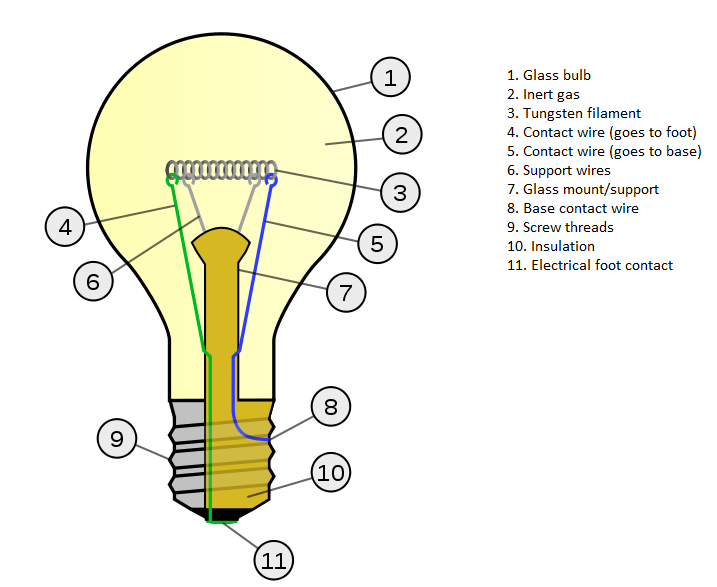
“We can easily forgive a child who is afraid of the dark; the real tragedy of life is when men are afraid of the light.”― Plato
The greatest invention of modern history is undoubtedly artificial/human generated Light. Thomas Alva Edison changed the world around us. Though various modifications and improvements for his design evolved over the years, The light bulb hasn’t changed a whole lot in its 120 years — the original design was just that good.
The incandescent light bulb, incandescent lamp or incandescent light globe produces light by heating a filament wire to a high temperature until it glows. The hot filament is protected from oxidation in the air with a glass enclosure that is filled with inert gas or evacuated. In a halogen lamp, filament evaporation is prevented by a chemical process that redeposits metal vapor onto the filament, extending its life. The light bulb is supplied with electrical current by feed-through terminals or wires embedded in the glass. Most bulbs are used in a socket which provides mechanical support and electrical connections.
Incandescent bulbs are manufactured in a wide range of sizes, light output, and voltage ratings, from 1.5 volts to about 300 volts. They require no external regulating equipment, have low manufacturing costs, and work equally well on either alternating current or direct current. As a result, the incandescent lamp is widely used in household and commercial lighting, for portable lighting such as table lamps, car headlamps, and flashlights, and for decorative and advertising lighting.
The biggest draw back is that Approximately 90% of the power consumed by an incandescent light bulb is emitted as heat, rather than as visible light.
Visible light is measured in lumens, a unit which is defined in part by the differing sensitivity of the human eye to different wavelengths of light. Not all wavelengths of visible electromagnetic energy are equally effective at stimulating the human eye; the luminous efficacy of radiant energy (LER) is a measure of how well the distribution of energy matches the perception of the eye. The units of luminous efficacy are “lumens per watt” (lpw). The maximum LER possible is 683 lm/W for monochromatic green light at 555 nanometres wavelength, the peak sensitivity of the human eye.
The luminous efficiency is defined as the ratio of the luminous efficacy to the theoretical maximum luminous efficacy of 683 lpw, and, as for luminous efficacy, is of two types, radiant luminous efficiency (LFR) and source luminous efficacy (LFS).
For a given quantity of light, an incandescent light bulb produces more heat (and thus consumes more power) than a fluorescent lamp. In buildings where air conditioning is used, incandescent lamps’ heat output increases load on the air conditioning system. Heat from lights will displace heat required from a building’s heating system; generally space heating energy is of lower cost than electricity.
High-quality halogen incandescent lamps have higher efficacy, which will allow a 60-watt bulb to provide nearly as much light as a non-halogen 100-watt bulb. Also, a lower-wattage halogen lamp can be designed to produce the same amount of light as a 60-watt non-halogen lamp, but with much longer life.
Many light sources, such as the fluorescent lamp, high-intensity discharge lamps and LED lamps offer higher efficiency, and some have been designed to be retrofitted in existing fixtures. These devices produce light by luminescence, instead of heating a filament to incandescence. These mechanisms produce discrete spectral lines and so don’t have the broad “tail” of wasted invisible infrared emissions. By careful selection of which electron energy level transitions are used, the spectrum emitted can be tuned to mimic the appearance of incandescent sources, or other different color temperatures of white light.
Efficient LED technology looks set to flick the switch on traditional incandescent light bulbs forever.
Because of environmental compulsions and energy saving requirements, Incandescent bulb will be phased out. Many countries have already planned to stop using this and gave direction for manufacturers to stop producing it. In 4 to 5 years time It will be hard to find one of these bulbs. I just preserved few models so that i can show them to my grandchildren.
